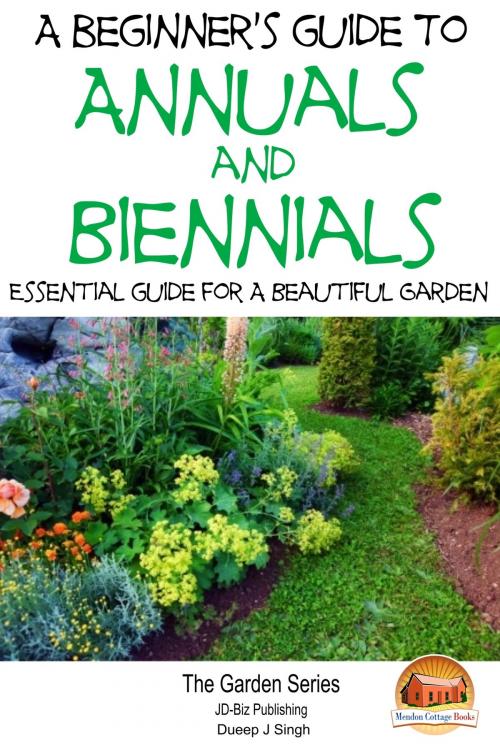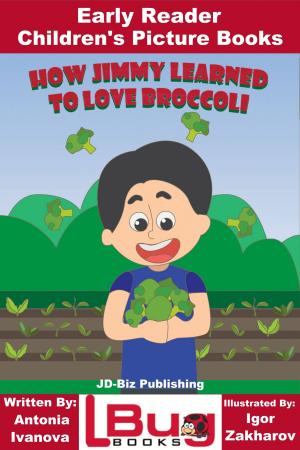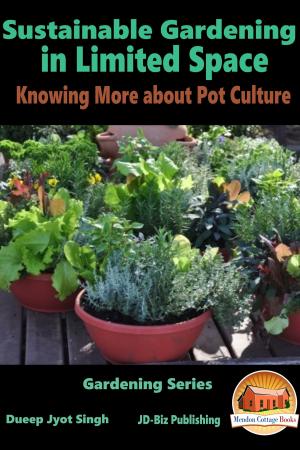A Beginner's Guide to Annuals and Biennials: Essential guide for A Beautiful Garden
Nonfiction, Home & Garden, Gardening, Flowers, Annuals| Author: | Dueep J. Singh | ISBN: | 9781311406170 |
| Publisher: | Mendon Cottage Books | Publication: | January 28, 2015 |
| Imprint: | Smashwords Edition | Language: | English |
| Author: | Dueep J. Singh |
| ISBN: | 9781311406170 |
| Publisher: | Mendon Cottage Books |
| Publication: | January 28, 2015 |
| Imprint: | Smashwords Edition |
| Language: | English |
Table of Contents
A Beginner’s Guide to Annuals and Biennials
Introduction
Choosing the Right Soil
Soil Color and Fertility
Humus
Preparation of the Soil
Best Time for Seed Sowing
The Thinning Process
Staking Your Annuals
Why Mulch?
Cultivation and Maintenance
Watering your Plants
List of Hardy annuals
Half Hardy Annuals
Annuals Suitable for Cutting Purposes –
Annuals for autumn blooming –
Half Hardy Annuals for Edging Your Border
Knowing More about Biennials
Sowing the seeds
Preparing the Ground
List of Popular Biennials
Conclusion
Author’s Bio
Publisher
Introduction
There are far too many people out there who are under the impression that you cannot have a beautiful garden without spending huge amounts of money. That is so not true. A little bit of planning and this fallacy is going to fall to pieces by the wayside. Those who are grown annuals for years are going to give this statement the lie gladly.
Their initial investment must have been just a packet of seeds. The next year, the plants were grown from the seeds collected from the previous years’ crop.
Do not forget that the life of an annual is limited to just 12 months and so you must not expect them to grow up and bloom again the next year, unless of course you allowed the seeds to lie in the bed without collecting them. That is when they are going to bloom up just like weeds with a little bit of rain, and with the coming of the spring.
One of the great advantages of annuals is that they are quite easy to grow and flourish in your garden over a long period. The most common are well known to even amateur gardeners who can recognize a cornflower, nasturtiums, Virginia stock and Candytuft. These are very beautiful in themselves, but every gardener is growing them in his garden.
So be a little adventurous and grow annuals that are lesser-known, whose names you will find in seed catalogs, nursery catalogs and in nurseries online.
There are two kinds of annuals – the hardy kind and the half hardy kind. The hardy annuals are sewn out of doors, either in the autumn are in the spring. The half-hardy annuals are normally raised in frames or under cloches if you are subject to a continuous frost. Half-hardy annuals may need a little bit more of extra care and coddling , but that extra is going to be worth it when you see the blossoms in your garden.
Table of Contents
A Beginner’s Guide to Annuals and Biennials
Introduction
Choosing the Right Soil
Soil Color and Fertility
Humus
Preparation of the Soil
Best Time for Seed Sowing
The Thinning Process
Staking Your Annuals
Why Mulch?
Cultivation and Maintenance
Watering your Plants
List of Hardy annuals
Half Hardy Annuals
Annuals Suitable for Cutting Purposes –
Annuals for autumn blooming –
Half Hardy Annuals for Edging Your Border
Knowing More about Biennials
Sowing the seeds
Preparing the Ground
List of Popular Biennials
Conclusion
Author’s Bio
Publisher
Introduction
There are far too many people out there who are under the impression that you cannot have a beautiful garden without spending huge amounts of money. That is so not true. A little bit of planning and this fallacy is going to fall to pieces by the wayside. Those who are grown annuals for years are going to give this statement the lie gladly.
Their initial investment must have been just a packet of seeds. The next year, the plants were grown from the seeds collected from the previous years’ crop.
Do not forget that the life of an annual is limited to just 12 months and so you must not expect them to grow up and bloom again the next year, unless of course you allowed the seeds to lie in the bed without collecting them. That is when they are going to bloom up just like weeds with a little bit of rain, and with the coming of the spring.
One of the great advantages of annuals is that they are quite easy to grow and flourish in your garden over a long period. The most common are well known to even amateur gardeners who can recognize a cornflower, nasturtiums, Virginia stock and Candytuft. These are very beautiful in themselves, but every gardener is growing them in his garden.
So be a little adventurous and grow annuals that are lesser-known, whose names you will find in seed catalogs, nursery catalogs and in nurseries online.
There are two kinds of annuals – the hardy kind and the half hardy kind. The hardy annuals are sewn out of doors, either in the autumn are in the spring. The half-hardy annuals are normally raised in frames or under cloches if you are subject to a continuous frost. Half-hardy annuals may need a little bit more of extra care and coddling , but that extra is going to be worth it when you see the blossoms in your garden.















